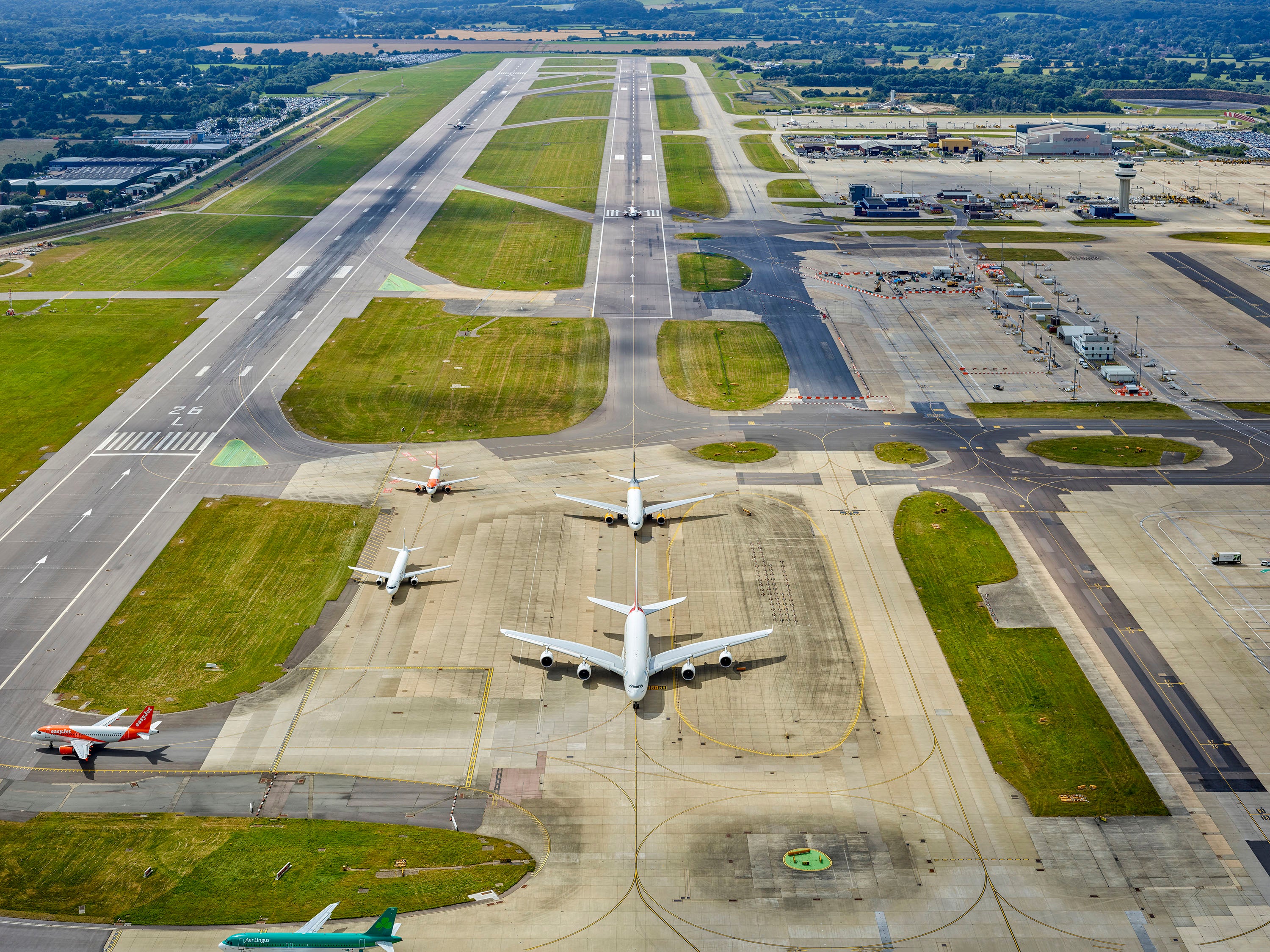Gatwick second runway moves closer – with airport challenging Heathrow
Exclusive: ‘We are introducing a noise-insulation scheme and will be a net-zero airport by 2030,’ says chief planning officer

Your support helps us to tell the story
From reproductive rights to climate change to Big Tech, The Independent is on the ground when the story is developing. Whether it's investigating the financials of Elon Musk's pro-Trump PAC or producing our latest documentary, 'The A Word', which shines a light on the American women fighting for reproductive rights, we know how important it is to parse out the facts from the messaging.
At such a critical moment in US history, we need reporters on the ground. Your donation allows us to keep sending journalists to speak to both sides of the story.
The Independent is trusted by Americans across the entire political spectrum. And unlike many other quality news outlets, we choose not to lock Americans out of our reporting and analysis with paywalls. We believe quality journalism should be available to everyone, paid for by those who can afford it.
Your support makes all the difference.Britain’s second-busiest airport, London Gatwick, is pushing ahead with plans to become a two-runway airport by the end of the decade – despite environmental concerns about the project.
The project involves bringing the standby runway into use for departures alongside the main runway – which is currently the busiest in the world for take-offs and landings. It would increase annual capacity from 281,000 movements to 386,000 – a 37 per cent increase, and just 20 per cent shy of current take-offs and landings at Heathrow.
The Sussex airport has formally submitted an application – known as a Development Consent Order (DCO) – to the Planning Inspectorate for permission to shift the current standby runway by 12 metres to the north.
This will provide sufficient separation from the main runway to allow take-offs of medium-sized passenger jets such as easyJet’s and Wizz Air’s Airbus A320s, plus Ryanair’s Boeing 737s. The plan would also involve an extension of the South and North Terminals and improving ground links.
The airport’s chief executive, Stewart Wingate, said the plans would “help secure the long-term future of the airport” and provide a £1bn annual economic boost for the South East England region.
“If approved, our plan will also improve airport resilience, meet future passenger demand, and increase competition in the London airport market, by providing vital new international connections to support ‘Global Britain’, he said.
“The consultation and engagement activity over the past two years has been hugely valuable in shaping our plans to ensure they best meet the needs and requirements of local people, as well as our airlines, passengers and other stakeholders.
“We are confident that our plans are both economically and environmentally robust.”
The project is expected to cost around £500m – a fraction of the proposed third runway at Heathrow. The controversial expansion plans for Heathrow’s additional runway involve taking over a significant amount of residential property, which the Gatwick project does not.
But opponents to Gatwick’s proposals say they “fly in the face of the climate emergency”.
When the consultaton opened, a calculation from the Green Party estimated that the plans could result in an extra 1.5 million tonnes of CO2 being emitted each year. The Green Party MP Caroline Lucas said the planned expansion was “completely incompatible with the UK’s climate targets”.
Speaking exclusively to The Independent, Gatwick’s chief planning officer Tim Norwood said: “We’re very aware there are impacts, so we are introducing a noise-insulation scheme and will be a net-zero airport by 2030.”
Helen Coffey, the Independent’s travel editor, who stopped flying in 2019 because of the climate crisis, said: “The term ‘net-zero airport’ is quite possibly the biggest oxymoron going. At a time when we need to drastically slash carbon emissions to halt further warming of our planet, proposing to increase flights, and therefore emissions, by 37 per cent seems wildly out of keeping with the UK’s CO2 reduction targets.”
Gatwick’s standby runway was created in 1979 when a taxiway was upgraded. It is used in emergencies when the main runway is blocked, and during scheduled maintenance of the main runway.
The main runway is known as 08R/26L, and the standby 08L/26R. The centre lines of the two runways are 198 metres apart. International rules stipulate a minimum distance between the centre lines of parallel runways of 210 metres “when the runways are intended for use by medium or heavy aeroplanes”.
Were the plan to go ahead, the existing main runway would be used for all arrivals and for departures of “heavy” aircraft such as the Airbus A330, A350 and A380 jets, as well as Boeing 787s and 777s. But because the majority of Gatwick’s flights are on “medium” A320s and 737s, many of the take-offs would use the current standby runway.
The planning process to expand a UK airport is complex. Angus Walker, partner at law firm BDB Pitmans, said: “Being large pieces of infrastructure with considerable environmental impacts such as noise, traffic and carbon emissions, airports must jump through numerous regulatory and legal hoops to gain approval.
“In the Gatwick vs Heathrow battle it seems that Gatwick have stolen a march on their rival.”
Heathrow airport’s position, as stated on its website, is: “Heathrow’s plans for expansion at the airport with a third runway to the north-west of the existing two are currently supported by government policy through the Airports National Policy Statement.
“Expansion at the airport would create tens of thousands of jobs and billions in economic benefits to the UK.Demand for aviation will recover from Covid-19, and the additional capacity at an expanded Heathrow - the UK’s only hub airport - would allow Britain as a sovereign nation to compete more effectively for trade.
“We are currently consulting with investors, government, airline customers and regulators on our next steps.”
Join our commenting forum
Join thought-provoking conversations, follow other Independent readers and see their replies
Comments